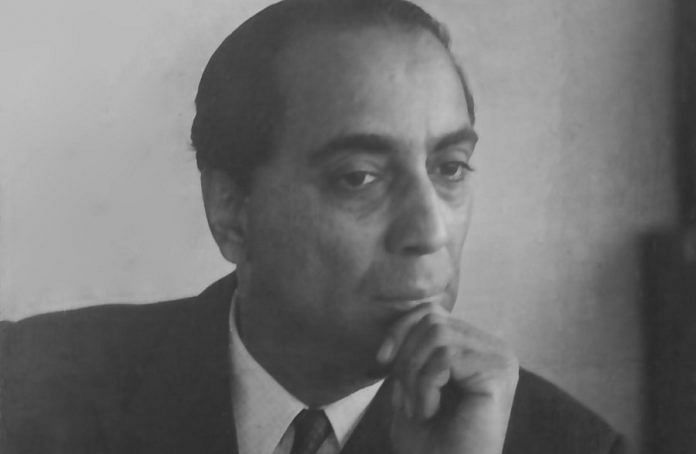Homi Jehangir Bhabha was more than India’s greatest Nuclear physicist and critical theorist. He was a man of many colours, a man whose life was largely under wraps until Nikkhil Advani brought it to light in the form of Rocket Boys, a Sony Liv series celebrating India’s greatest scientific minds. From his tiffs with fellow scientists to his unconventional and brave romance with Parvana ‘Pipsy’ Irani, the series shows that Bhabha’s life was as human as it was mysterious—although most of it was fictional and even borderline controversial. Either way, Bhabha’s contributions to India’s nuclear prowess remain undebatable.
“I have come more and more to the view that provided proper appreciation and financial support are forthcoming, it is one’s duty to stay in one’s country and build up schools comparable with those that other countries are fortunate in possessing.”
With these words in a letter to his uncle Dorab Tata, Homi Jehangir Bhabha wrote India’s scientific future, setting up the framework for what would become India’s first and premier institute of advanced research in physics.
Today, on his 110th birth anniversary, ThePrint looks back at the life and legacy of the man who birthed India’s nuclear programme.
War changed his plans
Born into a rich industrialist family in Bombay (now Mumbai) on 30 October 1909, Homi Bhabha graduated from the Royal Institute of Science after which he attended the University of Cambridge as a student of mechanical engineering, later switching to mathematics and physics — albeit against his family’s wishes.
While in England, Bhabha worked alongside legendary scientist Neils Bohr, published a groundbreaking paper, The Absorption of Cosmic Rays, and graduated with a Ph.D in 1933. His paper earned him the coveted Isaac Newton Studentship in 1934.
Taking a break from work, Bhabha returned to India in 1939, and soon after, World War II broke out. Given the turmoil in Europe, he decided to stay back and joined the Indian Institute of Science, Bangalore (Bengaluru) as a reader in physics.
In his letter to the Sir Dorabji Tata Trust, dated 12 March 1944, Bhabha wrote about the low standards of applied research in India and his desire to build an advanced physics research university.
Detailing why Mumbai would serve as an optimal location for such a school, he said, “it’s advantageous for a cosmic ray laboratory to be situated near the sea, for it is often necessary to make measurements at considerable depths underwater.” He went on to say how a progressive city like Mumbai lacks such an institution “worthy of its position”. He also believed situating the institution in Mumbai would help gather funding. The Tata Institute of Fundamental Research (TIFR) was established in June 1945, in IISc, with Homi Bhabha at its helm.
Bhabha also worked hard to convince Prime Minister Nehru of the need to establish India’s nuclear programme. In a letter to him in 1948, he wrote, “The development of atomic energy should be entrusted to a very small and high powered body composed of say, three people with executive power, and answerable directly to the Prime Minister without any intervening link. For brevity, this body may be referred to as the Atomic Energy Commission.” In 1948, Nehru appointed Bhabha as its first chairman.
Dr P.K. Iyengar, former chairman of the Atomic Energy Commission, in an earlier interview said, “Dr Bhabha had in his mind from the very beginning that India should become a Nuclear Weapons State. His emphasis on self-reliance is essentially due to the fact he wanted India to be a nuclear weapons country.”
Also read: Tarapur, India’s 2nd most powerful nuclear plant built with US help, completes 50 yrs today
The three-phase programme
Bhabha was popularly known as the principal architect of India’s nuclear energy programme, given he founded the three-phase programme for “India’s civilian nuclear program that also kept the nuclear weapons option open”. Soon after Independence, India began working towards a programme that would help bring cheap electricity to India. What began as a peaceful initiative, in fact, had byproducts required for a nuclear weapon.
The first of the three steps was the Pressurized Heavy Water Reactors (HWR), built with international aid in 1960, which bombarded “naturally mined U-238 with neutrons — leaving Pu-239 as a byproduct”. Canada and the US, who helped India with the HWR, agreed to do so only if the intentions were purely peaceful. However, the plutonium from the reactor was later redirected and helped with the nuclear tests in May 1974 in Pokhran, putting India on the nuclear map. The second step focused on creating more Pu-239 — an isotope of plutonium used for producing nuclear weapons — while the third step was to create more cheap, sustainable energy for the country by exploiting thorium reserves.
The plan was executed flawlessly and without any interference from domestic or international entities. Due to this, Indian scientists were able to move closer to building a nuclear weapon. In 1968, just two years after Bhabha’s tragic death shrouded in mystery and air crash rubble, the device used in the Pokhran explosion had begun to be built.
Also read: For 31 years after his death, Homi Bhabha’s office room was unoccupied




The author says “Given the turmoil in Europe, he decided to stay back and joined the Indian Institute of Science, Bangalore (Bengaluru) as a reader in physics.” It wasn’t so much a decision made by Homi Bhabha as one forced upon him by the circumstance of the World War. In reality, he was desperate to get back to England and thought of his sojourn in India during the war as a hardship. Take a look at Itty Abraham’s “The making of the Indian atom bomb” for details.